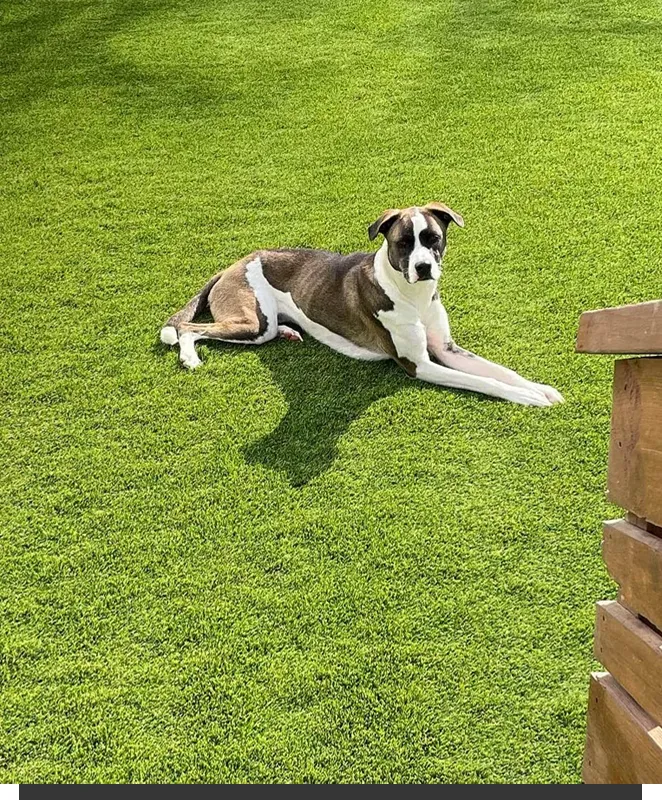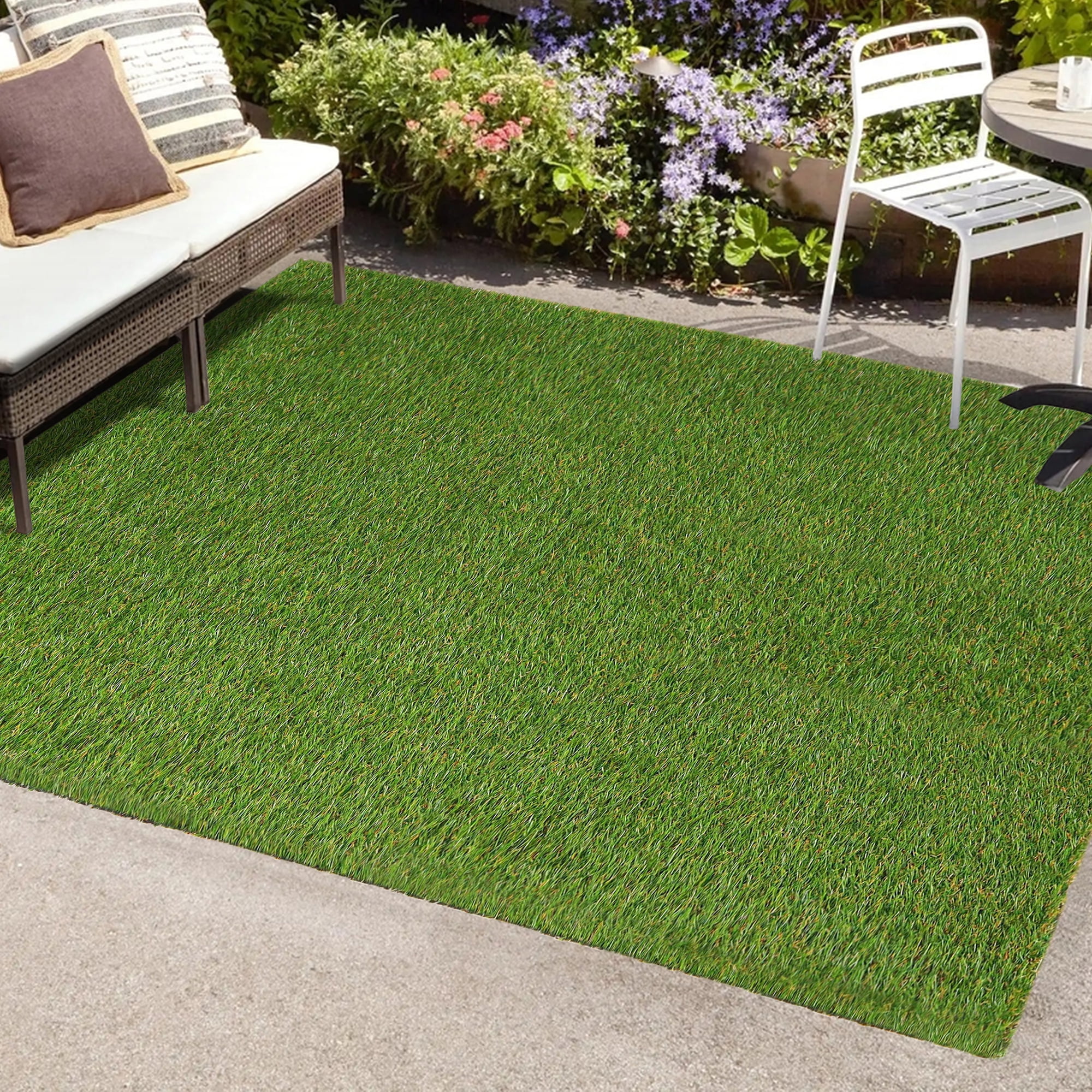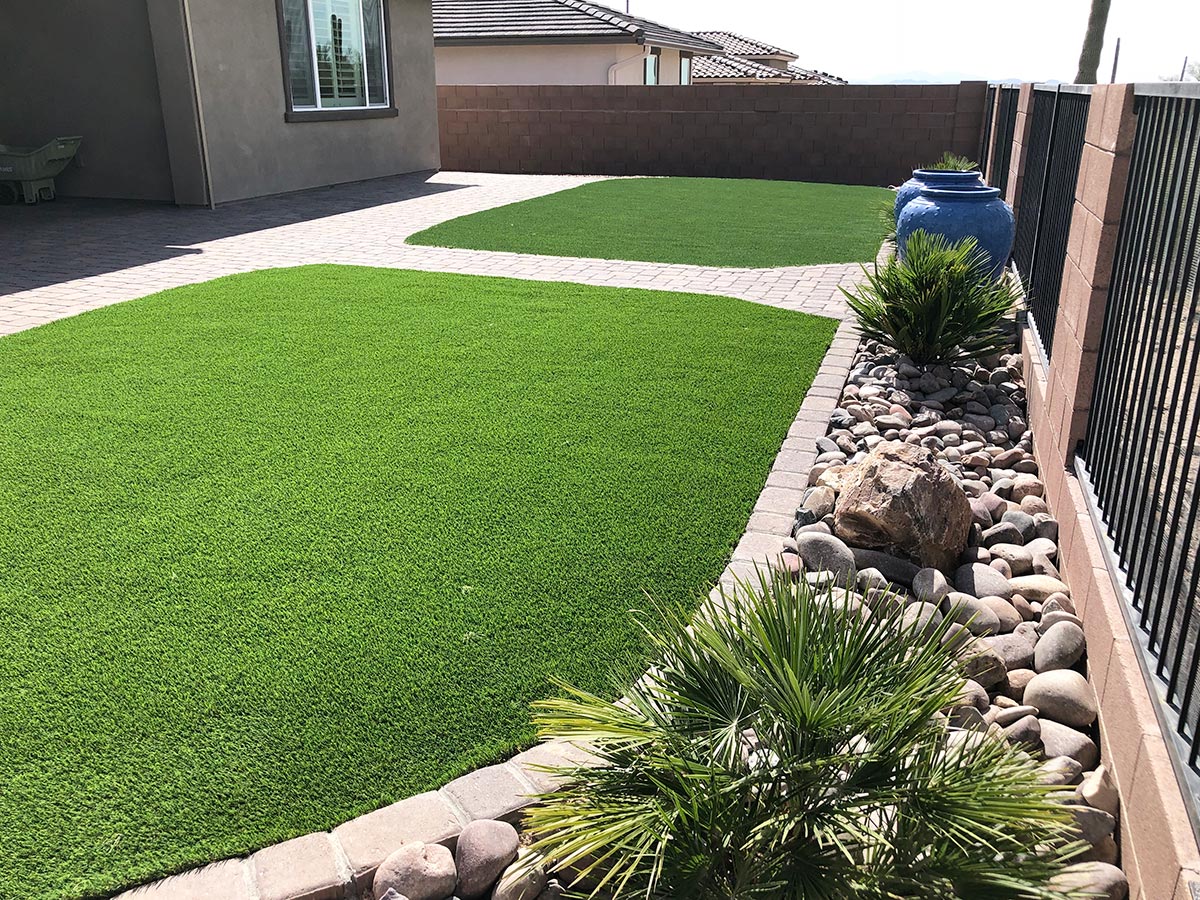Improve Your Home with the Top Arizona artificial grass You Can Buy
Improve Your Home with the Top Arizona artificial grass You Can Buy
Blog Article
Recognizing How Synthetic Grass Works for Your Home and Yard
Artificial grass has become a sensible option for house owners looking for to boost their outdoor rooms without the concerns of traditional yard maintenance. Comprehending its structure, setup process, and the numerous kinds offered can expose significant advantages for both appearances and performance. Nonetheless, the effects of picking synthetic grass extend beyond mere appearance; they touch upon ecological considerations and lasting sustainability. As we check out these aspects, one must take into consideration exactly how this ingenious technique can essentially alter the landscape of home horticulture. What elements should you consider before making the transition?
Advantages of Synthetic Grass
Identifying the growing popularity of synthetic grass, it is vital to discover its countless benefits. One of one of the most significant benefits is the decrease in upkeep requirements. Unlike natural turf, man-made turf does not need watering, mowing, or fertilizing, which converts to time and cost savings for house owners. This low-maintenance alternative is specifically enticing in areas with limited water resources, as it conserves water and lowers total environmental impact (Artificial turf companies).
Furthermore, fabricated grass provides a lavish and consistently green look throughout the year, despite weather condition problems. This visual allure boosts the visual high quality of any type of landscape, making it an eye-catching option for homes. Artificial lawn is resilient and designed to endure heavy foot website traffic, making it an optimal remedy for households with pet dogs and youngsters.
Safety is one more crucial factor to consider; modern-day synthetic grass is typically made from safe products and includes shock-absorbing modern technologies, minimizing the threat of injuries during play. Artificial turf is immune to weeds and parasites, getting rid of the need for chemical treatments, thus promoting a healthier outside setting. Overall, the benefits of synthetic grass make it an engaging option for enhancing home and yard areas.
Installation Process Overview
When taking into consideration the installation of synthetic turf, a methodical technique is vital to guarantee optimal outcomes. The installation procedure usually starts with detailed website preparation, which involves clearing the area of any kind of existing turf, particles, and rocks. This action is essential for developing a stable and level structure.
Following, it is necessary to assess the drain abilities of the location. Proper drainage is vital to avoid water pooling externally, which can result in premature wear or concerns with mold and mildew. This may call for excavation and the installment of a water drainage system if needed.
When the website is prepared, a base layer is installed, generally containing smashed stone or decayed granite, compressed to produce a strong surface. After attaining a smooth base, a geotextile material is put down to hinder weed growth.
The last phase includes laying the fabricated lawn itself. The lawn rolls are placed, reduced to fit, and protected at the seams utilizing customized or adhesive lawn tape. Finally, infill products might be related to boost security and boost the total look. Properly complying with these steps will certainly cause a durable and visually pleasing synthetic grass setup.
Types of Synthetic Grass

One of the key groups is residential grass, which is typically made use of in yards, backyards, and play areas. This type commonly includes a soft appearance, making it risk-free for children and family pets. Commercial lawn, on the other hand, is engineered for high-traffic areas, such as sporting activities fields and community parks. It provides toughness and strength, ensuring it endures rigorous usage while keeping its appearance.
An additional classification includes landscape lawn, which simulates natural grass carefully to boost the aesthetic appeal of yards and outside areas. Additionally, placing eco-friendly turf is especially developed for golf fanatics, including a shorter heap height and a smooth surface area visit this page for an ideal putting experience.
Lastly, pet-friendly turf includes antimicrobial homes and resilient products to make certain a sanitary and secure atmosphere for family pets. Selecting the appropriate type of synthetic grass is vital for attaining the desired look and functionality in your home and yard.
Upkeep Requirements
Correct upkeep is vital for extending the life-span and look of artificial grass. Routine maintenance not just enhances aesthetic appeal however additionally makes sure ideal efficiency. The primary maintenance jobs consist of cleaning, rinsing, and inspecting the grass.

Rinsing the lawn with water aids get rid of dirt, pet, and debris waste. Utilizing a tube with a spray nozzle makes this task effective and effective. In locations susceptible to heavy rainfall, make sure proper water drainage to avoid merging.
In addition, routine evaluations for problems, such as rips or loose seams, are vital. Prompt fixings can avert more significant concerns and keep the stability of the grass. By sticking to these maintenance demands, property owners can delight in the elegance and performance of their artificial turf for years to find, ensuring a dynamic and inviting outdoor space.
Ecological Considerations
Man-made turf provides a complex selection of environmental considerations that necessitate mindful assessment. Turf companies see this here mesa az. While it minimizes the need for water, plant foods, and chemicals, which are commonly related to all-natural lawn maintenance, there are considerable problems regarding its disposal, production, and use
The manufacturing of artificial grass includes petroleum-based materials, raising inquiries concerning nonrenewable fuel source usage and greenhouse gas exhausts. The installment process commonly calls for a layer of infill, frequently made up of products like crumb rubber, which can release damaging chemicals into the environment.

Disposal of man-made lawn offers one more challenge, as it is not eco-friendly and can add to land fill waste. Some reusing options exist, yet they are not commonly readily available or accessible.
Final Thought
In recap, man-made lawn presents numerous benefits for domestic and yard applications, consisting of visual appeal, reduced upkeep, and security for children and pets. Numerous types of synthetic turf cater to different requirements and preferences, while ecological considerations highlight its potential sustainability advantages.
Generally, the advantages of man-made turf make it go to my blog a compelling choice for boosting home and yard areas.
When considering the installment of artificial lawn, an organized technique is necessary to ensure ideal results. The turf rolls are put, reduced to fit, and protected at the seams using customized or adhesive grass tape. Effectively following these actions will certainly result in a long lasting and aesthetically pleasing artificial turf installment.
In summary, man-made grass offers various benefits for property and garden applications, including aesthetic allure, low upkeep, and safety for youngsters and family pets.
Report this page